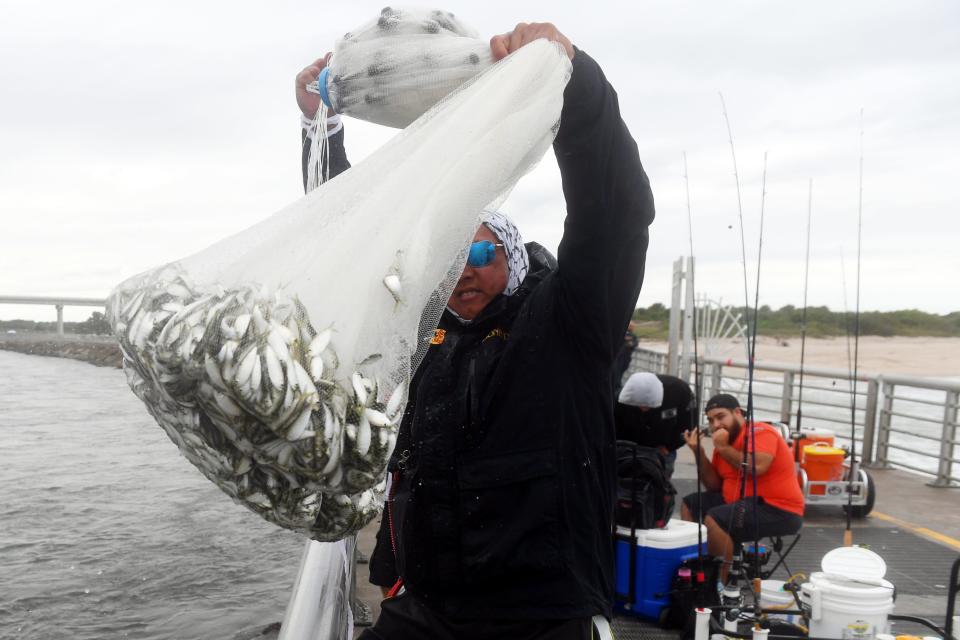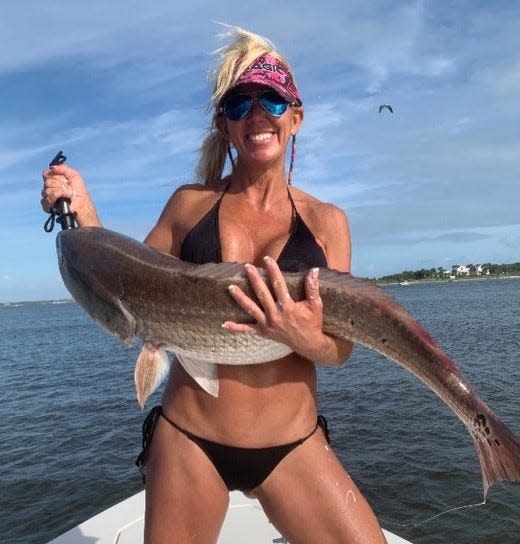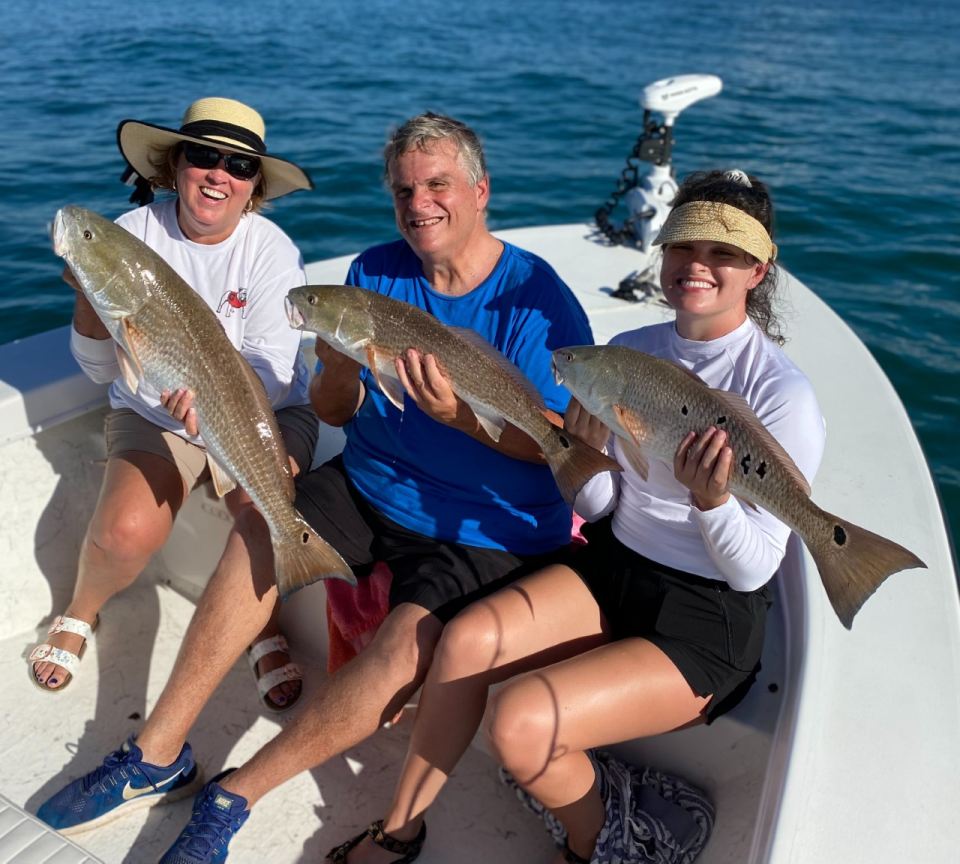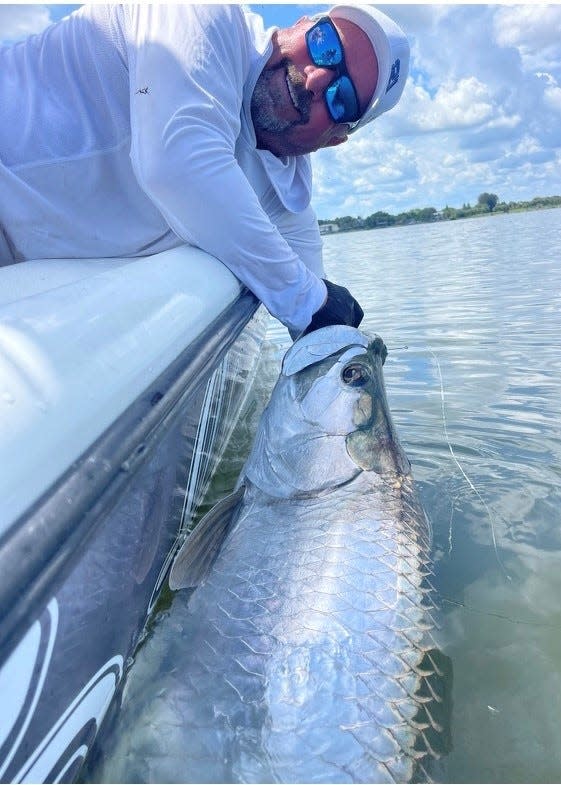Hurricane Fiona ruins some fishing plans, but fall mullet run continues | FISHING REPORT
Skin so pale
Six feet high
Skinny as a rail
Just one eye
— Lyle Lovett, “One-eyed Fiona”
Hurricane Fiona and her big ol’ eyeball has passed by, comfortably off our east coast, yet close enough to muck up any offshore or even nearshore plans you might’ve had for the coming days.
But not even a hurricane can do much to turn back Mother Nature, whose calendar has included a current phenomenon dating back farther than anyone remembers.
The fall mullet run.
Though not as sexy as the semi-annual pompano run, the mullet run is actually better because of what it triggers. Those mullet, which head south in the fall and north in the spring, are practically a smelling salt waved under the noses of our favorite predatory fish, whose sudden feeding frenzy leads directly to a bunch of tight lines and bent rods.
It’s not like the mullet can sneak past, either, with those wild flashes of silver scales serving as a beacon to the pelagic population.

“In the surf, the inlet, the river, all of it. They’re literally everywhere right now,” says Capt. Jeff Patterson. “I’ve already seen some of the craziest feeding frenzies I’ve ever seen. Two days in a row, I found a school of redfish with hundreds of fish, eating everything you threw at them.
“The fishing is some of the best of the year. I’ve already had plenty of days with 10 to 20 redfish, and they were still biting when I left.”
FISHBITES: The idea for Fishbites began with young Billy Carr in New Smyrna Beach
DOLPHINS JUST KNOW: Flipper might take the bait, but not the hook; dolphin encounters rare
The harder-working fishermen will use cast nets to catch their own finger mullet, which many consider their favorite bait when looking for a wide variety of prized catches.
“The catches can be tarpon, jacks, sharks, redfish, snook, black drum . . .” says Gene Lytwyn, who runs The Fishin’ Hole in Daytona Beach. “All sizes will migrate through in their own schools. The run usually starts in early September and is on and off through late November.”
The bigger catches, with mullet as bait, obviously come offshore when offshore is more inviting than it is this week.
“Offshore, they’re used to catch kingfish by free-line drifting over reefs and wrecks,” says Craig Patterson (Donald’s Bait, Port Orange). “Big tarpon love them. Tarpon will start to move south with the mullet run, along with the invading schools of bluefish.
“Inshore, redfish gobble them up year-round, as do the flounder, snook and trout. They’re basically one of the best live baits, second to shrimp.”
But don’t expect to see live mullet in many bait shops. Unlike pinfish, pigfish and mud minnows, mullet are too hard to keep alive for more than a day or two. All shops carry frozen mullet, and they’re fine bait, too, just not as fine as the live kind.
“A couple of the bait shops will sell live mullet, but not many,” says Lytwyn. “Most anglers will purchase small cast nets, 4-to-6 footers, at their local tackle shops and catch their own.”
About now, a few of you might be thinking . . . “Mullet as bait? For Aunt Jess in Savannah, mullet was dinner.”
It’s true, mullet grow big enough to deliver a pair of filets, and if you find one full of roe, you have yourself a culinary bonus. Research your own recipes, but trust me, ignore those that don’t include corn meal, grease and a skillet or deep fryer. Squish that roe into the grits, add a side of quality baked beans, and thank me later.
Or, as you’ve likely seen in your favorite fish market, mullet can simply be opened up, cleaned out, and smoked. Eat it that way or use it for your own fish dip.

Halifax/Indian River: Mangrove snapper, reds, and some boiling snook
Some of the migrating mullet detour through the inlets and into the intracoastal, so the inshore fishing has improved recently, though getting out early still helps the odds greatly.
With the inlet area churning a bit due to Fiona’s drive-by, the jetties aren’t the go-to choice for most right now.

Deeper inshore, however, “we’re seeing activity from jacks, snook, ladyfish, blues, mangrove snapper, and a few sheepshead,” Gene Lytwyn tells us.
“Mangroves and black drum,” reports Ike Leary from his Granada Pier bait shop.
Capt. Barry Englehardt fishes the northern stretches of the Halifax River with his charter clients, and also spends a lot of time in the Tomoka Basin and Tomoka River. The fishing, he says, has been good.
“Keeper mangroves in the (Tomoka) River along with reds,” he says. “Large schools of jacks in the Basin that are hitting anything you throw at them. Cast your old lures because they will destroy them.
“We came across some boiling water and it turned out to be a school of snook, and the action was fast and furious. However, they were all under-sized.”
Surf: A few small pompano included
The aforementioned mullet run is working its magic.
“Surf anglers are catching lots of whiting, a few small pompano, bluefish, and hooking up to numerous tarpon,” Lytwyn says. “The piers are similar, along with numerous reds and sharks.”

Offshore: Fiona alters any plans
Word out of Ponce Inlet has the Sea Spirit tethered to the dock through at least Sunday, due to Fiona’s churn.
Things might not be all that great whenever the coast clears. Offshore veterans will tell you, a passing hurricane roils the ocean floor and scatters so much sand about, there’s just no fish to be had for a few to several days.
Right on cue, it seems, the Sea Spirit will go to dry-dock next Wednesday (Sept. 28) for 2½ weeks of maintenance work.
St. Johns: Spring into action
All the rain has negatively affected water quality, which isn’t good for bass fishing, says Capt. Bryn Adams (Highland Park).
“Head closer to the springs to find better quality water right now,” she says. “We’re catching bass around that cooler, cleaner water.”
Also, she says, specks can be found trolling open water in the lakes. “Artificial jigs are the best bait,” she says.
Hook, Line & Clicker: Send us your fish pics
We want to see your most recent catch. Email your fish photos to ken.willis@news-jrnl.com.
Please include first and last name of angler(s), as well as type of fish (we're occasionally stumped). All are included with our online fishing report, and some occasionally make the print edition.
Do I need a fishing license?
You can find all the license info, including exemptions, on Florida's Fish and Wildlife Commission website: MyFWC.com. But the basics are:
No: If you're 65 or older, 15 or younger, you don't need a license.
No: If you're fishing with a licensed guide or charter boat, both of which purchase commercial licenses that cover their customers.
Yes: Most everyone else, including visitors from other states.
Yes: Even if you're a shore-based angler (shoreline, dock, pier, bridge, etc.). However: The shore-based license is free . . . But: You still need to register for that free license.
Where do I get a license, and what does it cost?
Many bait shops sell licenses, as do the bigger retailers (Bass, Dick's, Walmart, etc.).
Florida's FWC uses a third-party site for buying or renewing fishing licenses: GoOutdoorsFlorida.com.
The cost: $17 for an annual license.
Don't forget: Whether you're fishing fresh or saltwater, you need the specific license. Freshwater and saltwater licenses are both $17 annually.
I'm here on vacation, do I need a fishing license?
Yes you do, and they're also available at GoOutdoorsFlorida.com or certain bait shops and big retailers.
Cost: $17 for three days, $30 for seven days, $47 for a year.
Also: Non-residents need to purchase that license even if they're just fishing from shoreline or shore-based structures. (Florida residents need that license, too, but they're free.)
This article originally appeared on The Daytona Beach News-Journal: Hurricane Fiona can't blow away the fall mullet run | FISHING REPORT
